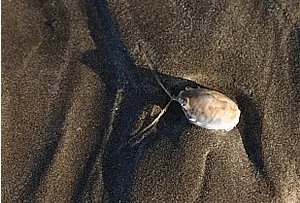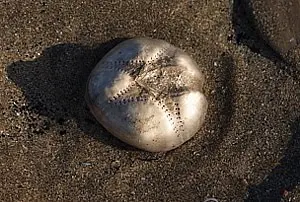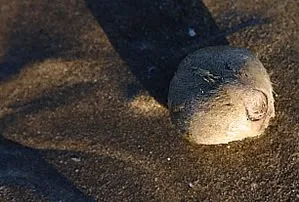


The
North Devon’s snow party is finally over. In December 2009 there was a cold snap and snow flurries ensuring the
UK enjoyed that elusive White Christmas. At the beginning of January a winter flock of lapwings on the field heralded the start of what was to be the coldest and longest snow spell for years bringing treacherous conditions on the minor roads in North Devon coast and country areas. (
The last time we experienced such extreme arctic conditions was when we were snowbound in Croyde in the early eighties, our first ever winter in North Devon.) School children were thrilled to be home building snowmen but it was a testing time for local services and those not able to go out for the duration. Congratulations are due to our rural postman who braved blizzard conditions to keep the Royal Mail coming. This was also a time to keep watch on the local bird population as feeding stations were even more vital. Taking advantage of the nuts and seeds on our garden bird feeder were, in various numbers, robin, chaffinch, greenfinch, pied wagtail, house sparrow, dunnock, blue tit, blackbird, willow tit, great tit, mistle thrush, collared dove, field fare, squabbling starlings and for the first time a stunning bull finch. Rising temperatures and gale force winds on the 15th January marked the end of the winter wonderland. By the 16th January the last traces of the children’s snowmen, built on the 5
th January were washed away by torrential rains. On the 17th January the field became a vital feeding ground for a flock of approximately 30 fieldfare. Ominously by Monday 18th January, the field is visited once again by an ever larger flock of between 141 and 150 lapwings. It will be interesting to see which birds hang around for the Big Garden Bird Watch, the RSPB's biggest event of the year which will be held over the weekend 30 and 31 January and encourages people all over the country to count the birds in their garden for just an hour over this one weekend. It's very simple to take part and provides the RSPB with information and patterns in bird numbers that help them prioritise their conservation work. They are also celebrating Big Garden Birdwatch with a special promotional incentive to join the RSPB - new members joining between 19 January and 31 March can choose a FREE RSPB classic apex nest box (normally £11.99) as their free joining gift.
Join the RSPB today  Big Garden Birdwatch Results for 2009
Big Garden Birdwatch Results for 2009. According to the RSPB for the first time in the survey's 30-year history, the long-tailed tit has flown into the Big Garden Birdwatch top ten. This highly sociable species increased by an astonishing 88% from last years count. They believe this pleasant increase is because this insect-eating bird has adapted to feeding on seeds and peanuts at birdtables and from hanging feeders. This result highlights perfectly the positive impact that our feeding and bird care can have on some birds. Record-breaking celebration. Well over half a million people celebrated the 30th year of the Birdwatch, making this the biggest bird survey in the world. A huge increase from humble beginnings in 1979 when just 30,000 children took part. Big Garden Birdwatch 2009 was held on 24 and 25th January 2009.
BIRDS ON TOP: The 2009 garden top ten:
Position Species Average per garden
1 House Sparrow 3.70
2 Starling 3.21
3 Blackbird 2.84
4 Blue tit 2.45
5 Chaffinch 2.01
6 Wood Pigeon 1.85
7 Collared Dove 1.44
8 Great tit 1.40
9 Robin 1.36
10 Long-tailed tit 1.34

 The
The  Big Garden Birdwatch Results for 2009. According to the RSPB for the first time in the survey's 30-year history, the long-tailed tit has flown into the Big Garden Birdwatch top ten. This highly sociable species increased by an astonishing 88% from last years count. They believe this pleasant increase is because this insect-eating bird has adapted to feeding on seeds and peanuts at birdtables and from hanging feeders. This result highlights perfectly the positive impact that our feeding and bird care can have on some birds. Record-breaking celebration. Well over half a million people celebrated the 30th year of the Birdwatch, making this the biggest bird survey in the world. A huge increase from humble beginnings in 1979 when just 30,000 children took part. Big Garden Birdwatch 2009 was held on 24 and 25th January 2009.
Big Garden Birdwatch Results for 2009. According to the RSPB for the first time in the survey's 30-year history, the long-tailed tit has flown into the Big Garden Birdwatch top ten. This highly sociable species increased by an astonishing 88% from last years count. They believe this pleasant increase is because this insect-eating bird has adapted to feeding on seeds and peanuts at birdtables and from hanging feeders. This result highlights perfectly the positive impact that our feeding and bird care can have on some birds. Record-breaking celebration. Well over half a million people celebrated the 30th year of the Birdwatch, making this the biggest bird survey in the world. A huge increase from humble beginnings in 1979 when just 30,000 children took part. Big Garden Birdwatch 2009 was held on 24 and 25th January 2009. 









